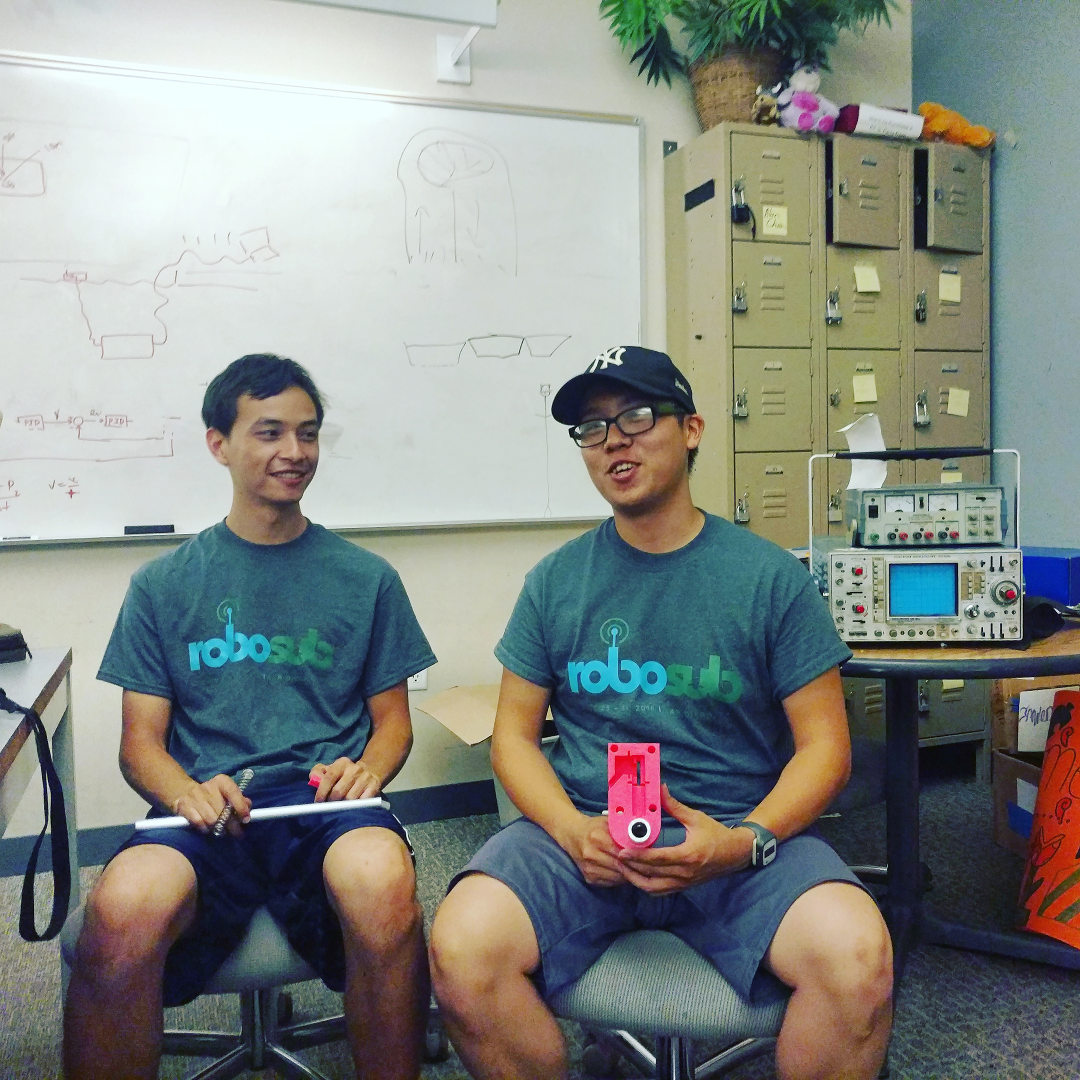Framing is Everything
The Seagoat is not engineered to be battle-ready, with claws not designed to rip apart the hulls of other submarines like a can opener shearing open a cold can of tuna, and torpedoes not designed to blast a hole through steel walls inches-thick.
Seagoat’s torpedoes, like the rest of the systems mounted atop its humble frame, are designed to compete and lay the groundwork for future generations of UCR RoboSubs. Through trial and error, over the course of a year, two mechanical engineers Steven Herzberg and James Luong engineered and developed a torpedo system for Seagoat capable of firing projectiles underwater at a distance of up to 4 ft.

Development Begins
Luong and Herzberg began work on the torpedo system in January, first by collecting standard parts like the aluminum torpedo and launch tubes, and then by designing hardware with Solidworks and later 3D printing them in-house. Their competency in Solidworks stems from the course offered at UCR, Engineering Graphics and Design, and they received training from the head mechanical engineer Raymond Lo on how to print their designs with a Makerbot 3D printer. After they received the parts they needed and printed the hardware they designed, the team began designing systems to fulfill the mission offered in the RoboSub competition.
Trial and Error
The first design the team landed on would utilize compressed air to apply a propulsive force to the torpedo, but this was abandoned because of issues keeping the air tank sealed.A compressed air system, it turned out, was unnecessarily complex for a project of this scale. The team settled upon a simpler yet just as effective spring loaded system and then went about designing a firing mechanism.
Herzberg and Luong tried implementing a gate in front of the torpedo that held it in place until it was ‘fired’, whereupon the gate would lift and the torpedo would launch from its tube. The gate required a lot of force to lift which in turn would create its own engineering problems, and the limited speed of the gate lifting would slow down the torpedo considerably. Because of these two issues this design was abandoned and the team reached the third and final design.
Torpedo Launch System Online
Luong modeled the final design on a how toy gun fired sticky darts: a pin locked into a notch etched onto the torpedo held it in place, and the torpedo is fired by lifting the pin up and out of the notch.
The endeavor took the duo nearly six months to complete. Herzberg gained an appreciation turning a 3D model designed in a computer into actual physical hardware that exists in the real world. Luong realized the importance of knowing one’s manufacturing capabilities. Herzberg and Luong will enter next year’s RoboSub competition and they will apply the knowledge and experience they’ve gained from this year’s to make the next AUV even better.
